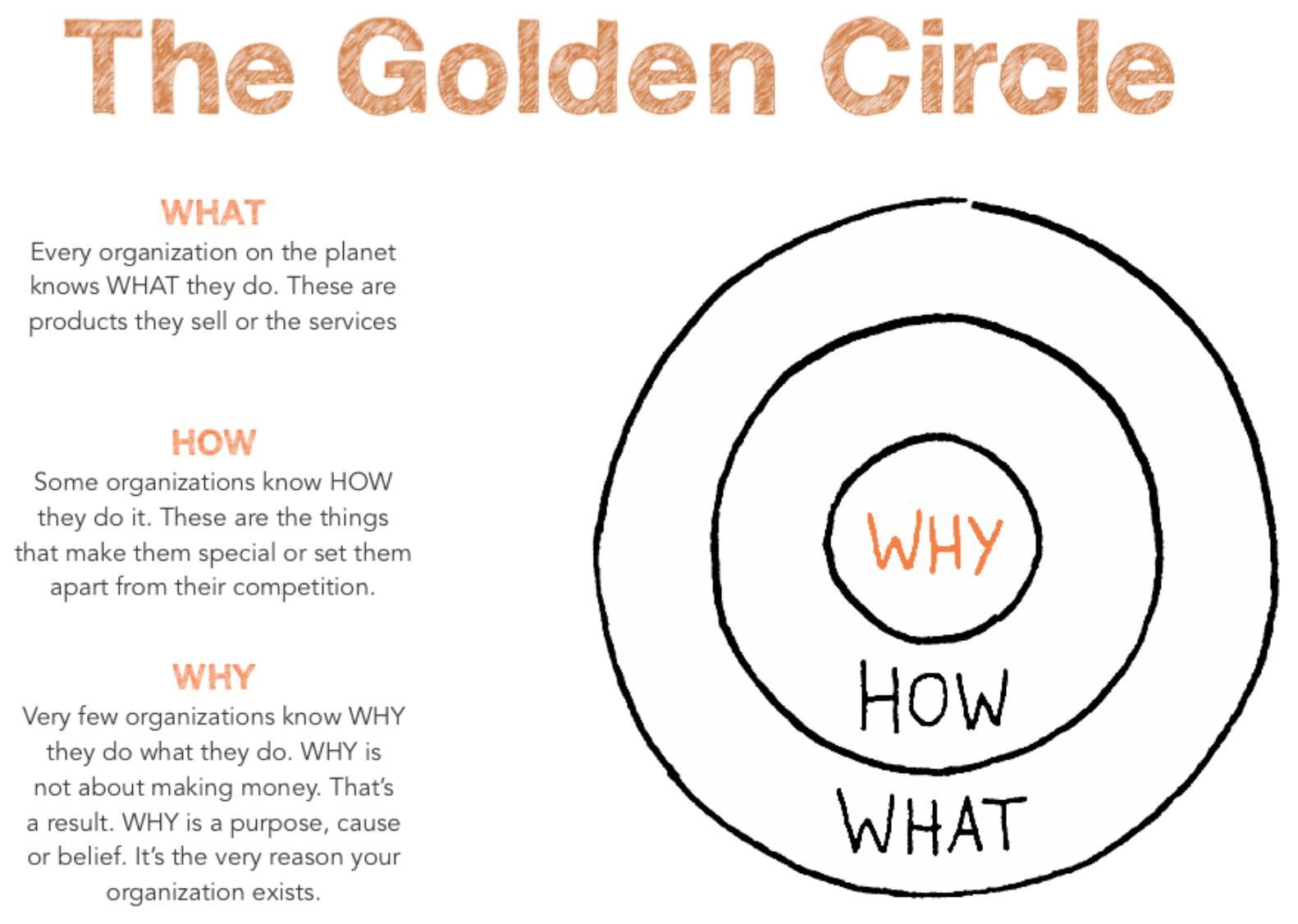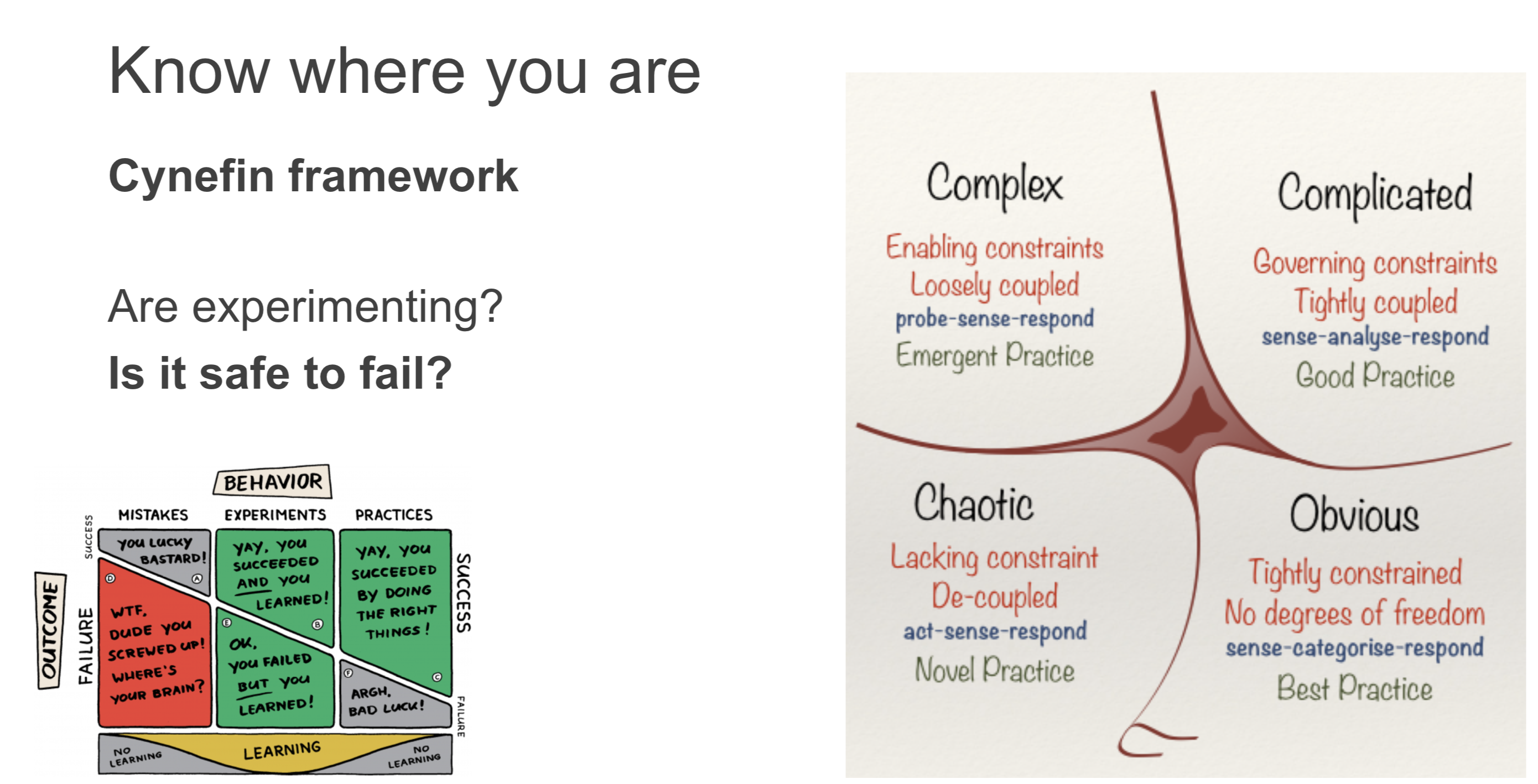Meetup du 16 Octobre 2018, organisé par IBM dans le Village By CA.
Les slides sont disponibles sur SlideShare.
Part 1 :
La première partie était présentée par Jérome Carfantan coach agile et auteur du livre Devenir une entreprise Agile.
Échelle :
Passer du local au global
- Apporter la valeur au client
- alignement pp business
A quel niveau ?
- Organisation
- Plusieurs équipes
- Équipe
- Individu Souvent tendance à oublier les individus
Golden circle
« Start with why » - Simon Sinek
Chez Apple par exemple, ils commencent leurs discours par “Dans tous ce que nous faisons nous pensons qu’il faut …” : “think different”

Niveau individu : Les mutilateurs intrinsèques (Model Daniel Pink)
- Why : sens
- How : Autonomie
- What : maitrise des compétences
Niveau équipe :
- Why: PO
- How : SM
- What : DEV
Niveau plusieurs équipes : agile@scale
- Why: chaine de valeur
- How : Dépendances
- What :communauté - échange sur les bonnes pratiques
Niveau organisation : Authenticité
- Why: clarté - vision Claire - pourquoi l’organisation existe ?
- How : Discipline - suivre & évoluer les process - remettre en question les process
- What :Cohérence des produits avec la vision
L’agilité est une culture
« When the things you say and the things you do are in alignment with what you actually believe, a thriving culture emerges » Simon Sinek
- Culture : intersection entre actions & values
- Il faut une cohérence entre ce qu’on dit et ce qu’on fait
- Inscrire l’amélioration continue dans le coeur de la culture l’organisation. Eg : Spotify
- La culture de la satisfaction du client —> Le client c’est le boss
- Le management est garant de la culture
- Boss : Uses people
- Leader : develops people
Dans d’autres process ?
RH
Il faut repenser le process RH qui consiste à faire des points annuels pour évaluer / récompenser (Corréler les processus de récompenses et évaluation). C’est un facteur de démotivation / turn-turnover.
Gestion budgétaire
Dépenser le budget toute l’année pour être sur d’avoir au moins le même budget l’année dernière —> Ce n’est pas agile
Frameworks
Il faut comprendre le contexte pour choisir la bonne méthode :
- Safe : Model opérationnel pour que les équipes délivrent
- Less
- Nexus
- Scrum Scale
- Management 3.0
- Beyond budgeting Institue
- Openspace agility : Transformation
- Innovation Games : Prodiut / intelligence collective
- Holacracy : Organisation innovante
- Heat of Agile
Conclusion :
L’agilité c’est une question de savoir être.
- Il ne faut pas se renfermer sur un jargon pour ne pas être inclusif sur la transformation.
- Il ne faut pas prendre l’agilité comme une boite à outils
Part 2 :
La deuxième partie était présentée par Frank Wagner, coach agile et Co-Organizer de Heart-of-Agile France.
Scaling ?
- Vertical : Scaling up
- Horizontal : scaling out
Vertical :
Contraintes :
- CPU
- Stockage
- réseau
Architecture
- Big iron
- Central DB
- Système Monolithique
Tradeoffs
- On ne peut pas livrer souvent
- Redondance
Horizontally :
Contraintes :
- CPU pas cher
Architecture
- Containers
- Micro-service
Tradeoffs
- Compatibilité
- Eventually consistent
Why scale ?
Vertically :
Contraintes
- Les entreprises sont montées verticalement
- Pas de motivation
- Offshoring
- Communication is expensive
Desired properties
- réduire les couts
- Increase productivity
- Cycle budgétaire annuel
Horizontally :
Contraintes:
- Cout de la communication ?
- Compétition
Properties
- Building right thing
- Short TTM
- Increase adaptability
Think smaller :
- Follow work through teams
- Réduire les dépendances managériales
- Small world networks
Where you are ?
Ou est ce que c’est complexe ?

Conway’s law
Any organization that designs a system (defined broadly) will produce a design whose structure is a copy of the organization’s communication structure.
You cannot change one without an other
- System : Manifest Agile
- Organisation : Software Craftmanship
Dans le cas contraire, un blocage au bout de quelques semaines.
Conclusion
- Est ce que vous êtes prêt a changer la culture de votre organisation ?
- Il faut faire des petits incréments
- Il faut la trouver soi-même
- Entre organisation et technique
Part 3 :
La dernière partie était présentée par Chris Norris, Enterprise Agile Coach, European Lead of Agile Centre of Competency, Associate Partner.
Objectif Agilité
- Make life better
- Humain think better when they move
- 18 years since Manifest agile
- Survey result
- Accélérer la livraison
- Améliore la capacité des managers à gérer les changementes de priorités
- Augmente la productivité
- Meilleure vision du projet
Cependant, 63% of projects faills.
Larman’s Law of Organizational Behavior
- Organisation don’t really want to change (Organisation are implicitily optimised to avoid changing)
Corollary :
- Any changement / initiative will be reduced to redefining or overloading
- Any change will be reduced to “theoritical”, “Revolutionary” and “needs pragmatic customization for local concerns” which deflects from adressing weaknesses and manager status.
- After changing the change, some managers & single-specialist are still displaced, and they become “coaches” for the change, frequently Corollary 1 & 2
Culture follows structure
Agile Adoption paterns - Richard Durnall
- Stage 1 : The people break
- Stage 2 : The tools break
- Stage 3 : The gouvernance breaks (When release ? ..)
- Stage 4 : The customer breaks
- Stage 5 : The money breaks (budget …)
- Stage 6 : The organisation breaks (portfio is not ready)
Context
Do not copy other’s models
Whatever your starting point, there is no single path to agility. Every context is unique.
What’s your starting point ?
- Where are you today ?
- Consider your organisation culture
- Revolutionary vs Evolutionary
Practices emerge through coaching, applied learning and experimentation. Having a clear understanding of organizational values and principles is critical.
Practices = Principles (context). Dan North
TIPS
- Stop taking about being agile
- Focus on the required outcomes instead
- Why we do agile
- It starts with you. Be the change
- Exhibit the behaviors you wish to see, especially as leaders
- Be patient. Share and celebrate success / failure
- Be transparent
- Hold others (esp leaders) to account
- Accent that adaptors will required through transition
- Scaling framework can help but in themselves do not
- Apply System thinkings
- Address impediments to flow
- Visualise work - make the invisible visible
- Limit Work in progress
- Invest high quality Coaches
- Don’t skip technical excellence
- High performance, corss-functional team
- Be aware of consultants presenting Top tips
Summary
- Still learning
- Individual interaction over Process/tools
- Method practice / frameworks help but, not suffcient in themselves
- Change begin with us
- Shift culture by changing behaviour
2 approches
- This is too big to do this
- Large transformations :
- Visualtion of work (Kanban board)
- Create a room to the experiment (at the highest level of organisation)
- Try to measure what’s happening